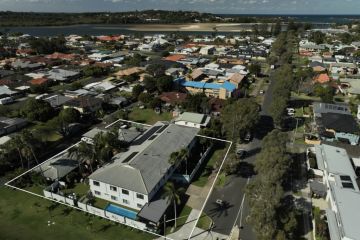Despite Australia's housing affordability woes, three bright spots emerge in REIA affordability report

Australians are now spending almost a third of their income to meet home loan repayments, new research shows.
The latest REIA Adelaide Bank Housing affordability report shows that across the nation, home owners are spending 31.4 per cent of their income to service their mortgage.
In NSW – Australia’s least affordable state – 38 per cent of the family income is needed to meet average loan repayments, while Victorian home owners are spending 33.4 per cent of the family income on repayments, up from 32.8 per cent a year ago.
In Queensland, home loan repayment affordability also declined over the quarter but improved slightly in comparison to this time last year – now sitting at 27.2 per cent of the family income going to mortgage repayments.
Despite Australia’s overall affordability woes, there were a few bright spots in the report.
1. Rents affordability has improved in the ACT, Western Australia and Queensland
According to the REIA report the ACT was the standout in rental affordability, with only 17.9 per cent of the family income needed for median rent payments. Next was Western Australia, with 18.1 per cent, down from 19.7 per cent a year ago.
The report also shows that rental affordability improved in Queensland and South Australia.
Domain Group chief economist Andrew Wilson said affordability would continue to improve in WA.
“Rents have been moving downwards in Perth – a clear product of an oversupply in properties,” he said.
In Queensland rental affordability also improved, with 23 per cent of the family income going to median rental repayments.
There was a slight improvement in the last three months’ rental affordability at a national average level, according to the head of business development at Adelaide Bank, Darren Kasehagen.
“Over the quarter, the proportion of median family income required to meet rental payments reduced by 0.6 percentage points to 24.3 per cent,” he explained.
It was a sentiment Malcolm Gunning, the president of the Real Estate Institute of Australia, shared. He said that while housing loan affordability had declined across the country, “rental affordability had generally improved during the second quarter of 2017”.
2. In Tasmania and the Northern Territory, it could be cheaper to buy than rent
Across Australia the average home loan size is now $386,664. By contrast, in Tasmania it’s $241,379, with average monthly loan repayments coming in at $1443.
And despite declining affordability in the state, it could be cheaper to pay off a mortgage then rent there. The report found that while 23.9 per cent of the family income would be needed for average loan repayments, a steeper 25.8 per cent would be needed for median rental repayments.
“Again it depends on the measures. Hobart rents have risen very sharply, but so have prices,” said Dr Wilson. “Hobart rents are now higher than Perth rents, but the Perth median is now well ahead of Hobart.”
On the other hand, the Northern Territory showed an improvement in both housing and rental affordability over the year. With an median family income of $2094, 20.3 per cent would go to average loan repayments, while 23.1 per cent would be devoted to meeting median rents – down from 22.1 per cent and 25.1 per cent, respectively, in the June 2016 quarter.
Domain Group data also shows Darwin’s affordability improving markedly over the June 2017 quarter.
3. WA has the highest percentage of first-home buyers in the owner-occupier market
In Western Australia, about a third (33.7 per cent) of owner-occupiers are first-home buyers. The state makes up 17.5 per cent of the nations first-home buyers.
The number of first-timers was up 16 per cent over the quarter (3.8 per cent over the year). Interestingly, the average first-home loan size actually decreased over the year, although home loan affordability also decreased slightly.
Dr Wilson said this was indicative of a slower market overall, rather than more first-home buyers getting their foot in the door.
“There hasn’t been a huge rise in first-home buyers, more that they’ve continued but there’s been a drop in owner-occupiers because of a soft market.”
Mr Kasehagen noted that Western Australia wasn’t the only region to post an increase of first-timers.
“Compared to the corresponding quarter in 2016, the number of first-home buyers went up in Queensland, Western Australia, Australian Capital Territory and the Northern Territory, with both territories recording very solid first-home buyer growth of 49.6 per cent and 40 per cent, respectively,” he said.
We recommend
We thought you might like
States
Capital Cities
Capital Cities - Rentals
Popular Areas
Allhomes
More





